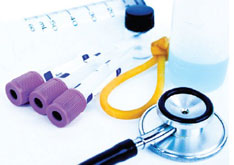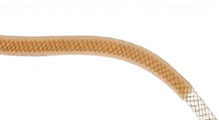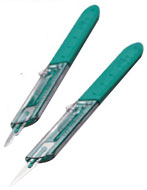Also, download this story from the electronic issue here
More often than not, quality comes with a hefty price tag. But in the medical sector, since only the technically sophisticated and high-quality plastic grades find their way into healthcare applications, and since plastics afford the potential to optimise system costs as well as improve processability, the polymers are getting the preferential treatment over other materials, says Angelica Buan in this report.
Plastics have been the subject of debate for both safety and efficiency. Fortunately, recent studies have debunked most of these assumptions, with the positive appraisals thus propelling medical plastics in the limelight.
The increasing need for medical devices with a high shelf life, increasing export and import of medical devices, increasing demand for sterilised and disposable devices are some of the factors driving the sales of the medical plastics market, according to research company Transparency Market Research.
American plastics industry association SPI says plastics are responsible for reducing contamination both in the home and hospital setting for medical packaging, prostheses, implantable, wearable and drug delivery devices.
Being key components in many modern devices, plastics provide ease of use, light weight and efficiency. Surprisingly, these benefits are said to help minimise healthcare costs. Medical device manufacturers also find medical plastics less expensive than metallic components such as titanium. Furthermore, the increasing use of non magnetic equipment around heavily magnetised medical equipment such as an MRI, are other factors serving as market drivers for the medical plastics market.

Plastics have long been used in medical technology, even before synthetics. For example, the first PMMA contact lenses and plastic material artificial limbs were made in the US in the 1930s.
Today, a growing opportunity for medical device manufacturers includes a shift from using traditional metal or other fibre-filled materials in their applications to plastics. Thus, sophisticated composites, like carbon fibre-reinforced plastics (CFRPs), are being used to make such unusual prostheses like the one used by the now infamous South African athlete, Oscar Pistorius.
Hence, expectations and demands on plastics for use in medical technology are growing. This has seen the advent of improved silicone elastomers, thermoplastics with antimicrobial finishes, resistance to fungal and bacteria contamination as well as nanotechnology to expand applications.
Growth for convenience
It is little surprise that sales of medical plastics are constantly high. Transparency Market Research says that the global medical plastics market may hit US$3.5 billion in 2018, driven by developing markets and an ageing population.
Though the US has the maximum market share in the market because of factors like technological advancements and availability of sophisticated medical devices coupled with high diligence concerning healthcare awareness, the rising economies in Asia will propel the growth of the sector in the region.
NanoMarkets, another research firm based in Virginia, US, supports this forecast with its own estimate that medical plastics, including acrylics, styrenics and PP, will account for US$1.6 billion in polymer sales by 2018. Plastics for use in diagnostic systems are expected to earn more than US$1 billion over the same period.
Meanwhile, a new report by iData Research says the US knee reconstruction device market , which is made up of primary knee implants, partial knee implants, revision implants and cutting blocks, is expected to grow to over US$5 billion by 2020. This is due to the increasing number of people who require revision knee implants. The demographics of knee arthroplasty patients have also been changing to include younger patients. As revision implants carry the highest price of implants in this market, they will continue to aid the growth of the knee reconstruction device market, which is expected to grow to over US$1 billion by 2020. According to iData Research, the main players driving this growth are Zimmer, DePuy Synthes and Stryker.
Overcoming trust issues
The public has not yet gotten over incidences relating to healthcare products and medical devices (mostly implantable) containing additives such as bisphenol A (BPA) and phthalates that are considered to pose health risks.
Nevertheless, ortho-phthalates, including DEHP, are commonly used vinyl softeners that act as an important ingredient in the manufacture of medical devices, most notably blood bags and flexible tubing. Based on decades of testing and use, these phthalates have been confirmed as safe by the US Food and Drug Administration (FDA), European Commission and other regulatory and product safety authorities around the world for their intended uses.

As well, the SPI published a “White Paper on Marketing Claims Related to Phthalates in Medical Devices” in 2012 in response to industry requests for guidance on an appropriate way to communicate with the supply chain about the presence of phthalates using terminology that indicates a de minimis amount that will not be misunderstood.
Meanwhile, European trade association PlasticsEurope, in a 2013 report, wrote that plastics are safe despite that fact that they occasionally figure in health and safety debates.

Surgical devices manufacturer Ethicon, a unit of Johnson & Johnson, conducted a study via a US-based independent laboratory NAMSA on the safety of PC medical devices. The company disclosed that levels of residual BPA in devices moulded from medical-grade PC are significantly below the levels that could present a threat to human health.
The Ethicon study reveals that sterilisation has no impact on the medical-grade PCs, compared to sterilised drinking cups, which it says shows a difference in the amount of BPA when extracted by ethanol.
Further to this, Denmark’s Environmental Protection Agency, Health and Medicines Authority and the PVC Information Council also conducted a study on phthalates in medical devices, evaluating ten existing PVC plasticisers. The PVCMed Alliance partners say that most of the alternatives to DEHP that have been assessed for impact on human health and environment are considered to be safe. Nonetheless, it said that some of the alternatives are wanting of data for a safety assessment to be carried out.
Why then are these alternatives still being used? It is because certain types of medical devices require properties such as softness, sterility, resistance to chemicals, stress and cracking, and flexibility.
China’s medical device market under scrutiny
To keep a tight rein on the possibility of health threats, medical plastics undergo strict regulations. Despite the increasing sales of medical plastics, under the purview of diligent government regulations, there are still a significant number of medical device product recalls due to patient safety issues. These are major stumbling blocks for the medical plastics market, says Transparency Market Research.
(PRA)


















